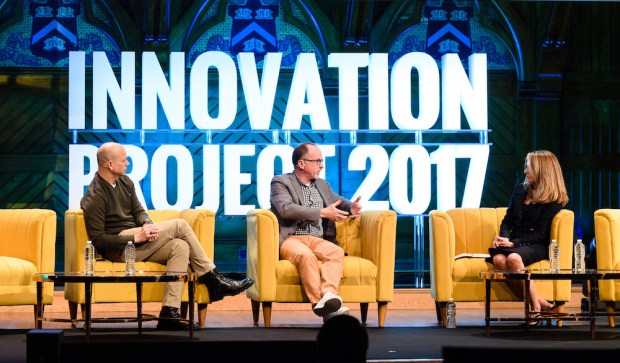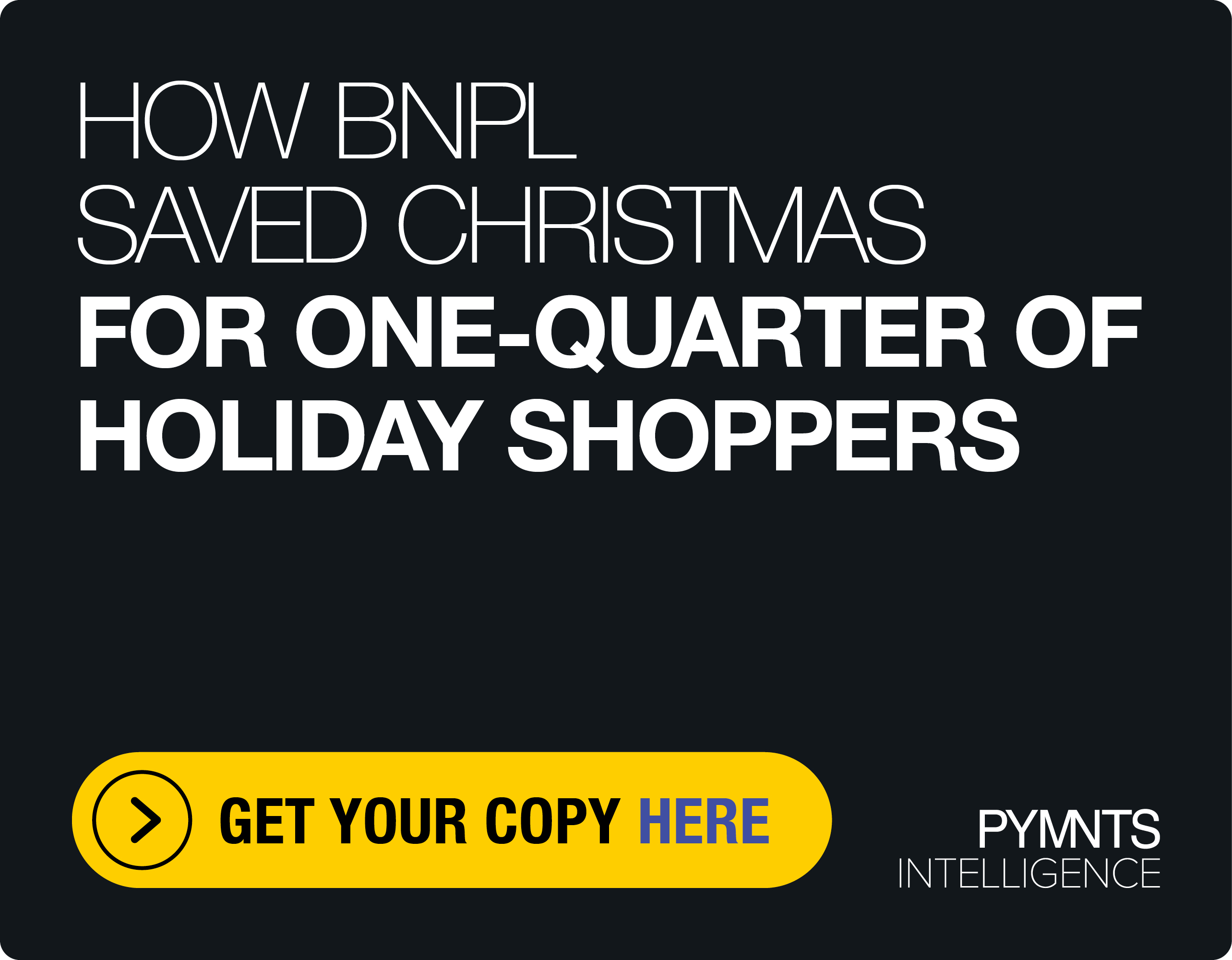Tony Fadell And Jim McCarthy Talk Our Connected (Commerce) Future

Digital, to be sure, is one path commerce is taking and will take. The question is, what else does the future hold for us, interconnected as we will be? As discussed at one Innovation Project panel, commerce hinges on safety and a data-based Bill of Rights, and companies must always ask of Innovation, “Why?”
Predicting the future is easy if you’ve got the right tools. But it’s hard to find out if you’ve got the right tools until an event is over. Just ask pollsters or people who bet on the ponies.
Ah, well, therein lies a point. Or a moral. Or possibly a sore spot depending on which side of the bet you take. Technology and conventional wisdom can get things horribly wrong at the intersection of tech-driven innovation and commerce.
In a wide-ranging discussion at last week’s Innovation Project (IP) 2017 across panelists with a wide range of experience in commerce, from product creation to private investment, the consensus emerged: Corporate mindfulness is key when it comes to pleasing new and old customers alike.
Moderated by PYMNTS’ Karen Webster, the panels featured Tony Fadell, one of the creators of Apple stalwarts including the iPod and iPhone and former CEO of Nest, and Jim McCarthy, EVP and global head of innovation at Visa. Discussion over the ways to embrace and promote innovation — especially as it pertains to connected devices — spilled over into the investment and artificial intelligence realms as Prof. Jason Mars, CEO of Clinc, and Peter Bell, senior advisor at Highland Capital Partners, also joined the conversation.
What drives innovators, to, as Apple once nudged us, “think different?” The impetus, along with the boon for consumers, lies along the same coin. But the innovator, and the company doing the innovation, must know that change, simply for change’s sake, is no real answer.
Heating Up Innovation — Literally
Here’s exhibit A: the homeliest of home appliances, the thermostat. As Webster noted, Nest, which has changed the look and function of the thermostat beyond making the device look better, innovated based on a mindset. Why the thermostat amid a sea of devices that could conceivably gain benefit from a makeover? Key among concerns, as noted by Fadell: 50 percent of a household bill was spent monthly on heating. The savings could be in the thousands of dollars if a device could be designed that was easy to use.
Speaking more generally, that mindset for innovation must consider just who the audience is that change is being directed toward.
“You have to think about what you are going to bring into the world that is going to be different,” said Fadell. And it is not just the experience, he said, but whether consumers can come away empowered. In essence, he said users can have “superpowers that they never had before. They understand, they have an eye-opening experience and it is part of them … That’s when [experiences] are transformative.”
Even for the payments space, he continued, when iPods were taking shape and function, for example (and financial firms wanted the devices to operate as payments conduits), the question must be asked with any new iteration: “Yeah. We could, but why? What’s the better experience?”
In general, what must happen is that “we have to take off our habituation, our blinders,” said Fadell, where friction in interaction with devices or even businesses has become the norm. It doesn’t have to be that way, he said. But one caveat: Just because something can be connected doesn’t mean it should be connected, reflecting the all-too-common mindset of businesses focused on “what, rather than why.”
His own investments in companies (post-Nest) have focused on “unloved” subsets of commerce, such as laundries and vending machines, where payments just now are starting to find stickiness and user loyalty as change (and dollar bills) are being replaced by new behavior tied to old devices.
Among other investments, he noted, are stakes in cannabis companies, which he termed as disruptive firms that must recreate everything from payments to point of sale to mobile interactions. They start with nothing and must in effect invent an ecosystem.
As Visa’s McCarthy took the stage, he concurred with the idea of giving consumers superpowers as the hallmark of successful innovation, noting similar disruption from payment cards — indeed likely the very conduit that allowed people to book flights and hotels and make their way to IP 2017 in the first place. Ours is now becoming, evermore, a world where devices of all stripes talk to each other.
Said McCarthy, “these devices work the same in every country. The interfaces may be different,” but the process is the same.
But one caution must be heeded, he said. “Just because you can connect something doesn’t mean you should. What problems are you solving?”
His own firm, he said, routinely goes out into the field to ask consumers what is wrong with various products, a tough sell for many other firms “that just do not want to hear that.”
The Information Deluge
The backdrop now is one where amid connected devices “we are drowning in information,” said McCarthy, and room for improvement exists in paying attention to data and how financial services as a practice can be improved.
Pain points can become easier to solve in part as certain devices become digital, where once they were analogue. The flexibility allows consumers to choose where they pay and how they pay and even how they budget — moving beyond replacing a piece of plastic. In one example, he mentioned tracking each of his several children and their driving habits and safety through devices and phones, which satisfies “an important need … making sure that my kids are OK.”
And as data gets shared and proliferates across different settings, such as cars and the home and even the act of walking down the street, said Fadell, devices and screens will wind up in grouped interfaces, in the background, rather than actively competing for attention.
There is also the need to organize all the data that is incoming, and McCarthy said that Visa is “making the mobile banking environment really about extracting information and making sense of it” across activities and users. Endpoints are now digital, he noted, and so the consumer gets more control over payments and even which merchants can get “pushed credentials” per customized controls.
The flood of data, stated Webster, begs the question, “Whose data is it anyway?” Visa can see 129 billion transactions a year, noted McCarthy, and $7 trillion of volume processed. Data points on location and tokenization can be additional credentials to give peace of mind for transactions and drive fraud out of the system, said McCarthy.
The debate over data, said Fadell, changes as consumers gain insight into how that data is collected and shared.
“There is going to be a Bill of Rights for data,” he predicted, with “personal data security guards whom we are going to hire” and services to that effect that may be offered by firms.
The trio agreed that data can be monetized, in what Webster termed “a rich vein” that can benefit firms, to be sure, but also their consumers. But, as Fadell stated, using Nest as an example, firms must develop and offer up manifestos, which show “this is how we see data, and here’s what we will and what we won’t do. Here’s all the detail … This is what your data means to us and what it means to you. You have to be that clear,” he stated. The key is to be transparent, especially for the millennials, as “they are looking at all that stuff,” Fadell said.
As for protecting devices, McCarthy stated that the overarching assumption and mindset has been that “everything is going to be hacked … You have to assume that bad things are going to happen.” In fact, with the advent of tokenization, the typography has been such that only the banks and a few other parties truly know the underpinnings of the technology and the transaction, so that any malfeasance can be quickly pinpointed and addressed.
And in discussion with Clinc’s Mars and Highland Capital’s Bell, the former said that data “is much more a problem for the businesses than it is for the consumer.”
Firms must create narratives that make sense and are trustworthy in detailing why they are collecting data in the first place, said Mars.
“In general,” he stated, “people just expect that their data is going to be in the hands of those companies.”
The movement toward a standard approach to data and personal information (and algorithms applied to that data) will be “an intellectual journey,” he said.
Digital Nuclear War
But the real fear, said Fadell, comes with the threat that data will be co-opted and used for blackmail.
“That is what we all have to guard against and where we all have to be vigilant,” he said. “People do not understand that we are in an incredible, digital world war right now … because it is not ‘clear and present danger’ as we used to know it.”
In essence, said Fadell, individuals and even state actors are using “digital nuclear bombs” to disrupt lives and political systems. “It’s a world war between proper society and global criminals.”
Bell stated that the younger users do not understand “the power of all this information.” Companies (and individuals), noted the panelists, are going to have to enlist the efforts of defense systems and adopt what might be termed a military presence to be armed and preemptive against such bad actors.
Some companies are indeed looking to beef up defenses to ensure digital security. Bell said that “we do early-stage investing, and … what’s challenging as an investor is the timing. Because all of this stuff, this militarization of data, is a big opportunity,” but uncovering investment opportunities or handicapping some firms comes down to “people who can simplify these incredibly challenging problems, in terms of the productization, how they communicate it to the consumer.”
Bell noted that there exists significant opportunity within the $3.4 trillion in enterprise IT spend and within the corporate world embracing storage and security technology in a way that the consumer world already has.
But reducing problems or solving them is not enough, said Bell. “You have to delight the consumer” and always focus on the end user. And, chimed in Fadell, “it has to be 50 percent rational and 50 percent emotional” to spur consumer adoption of a new way of doing things.
